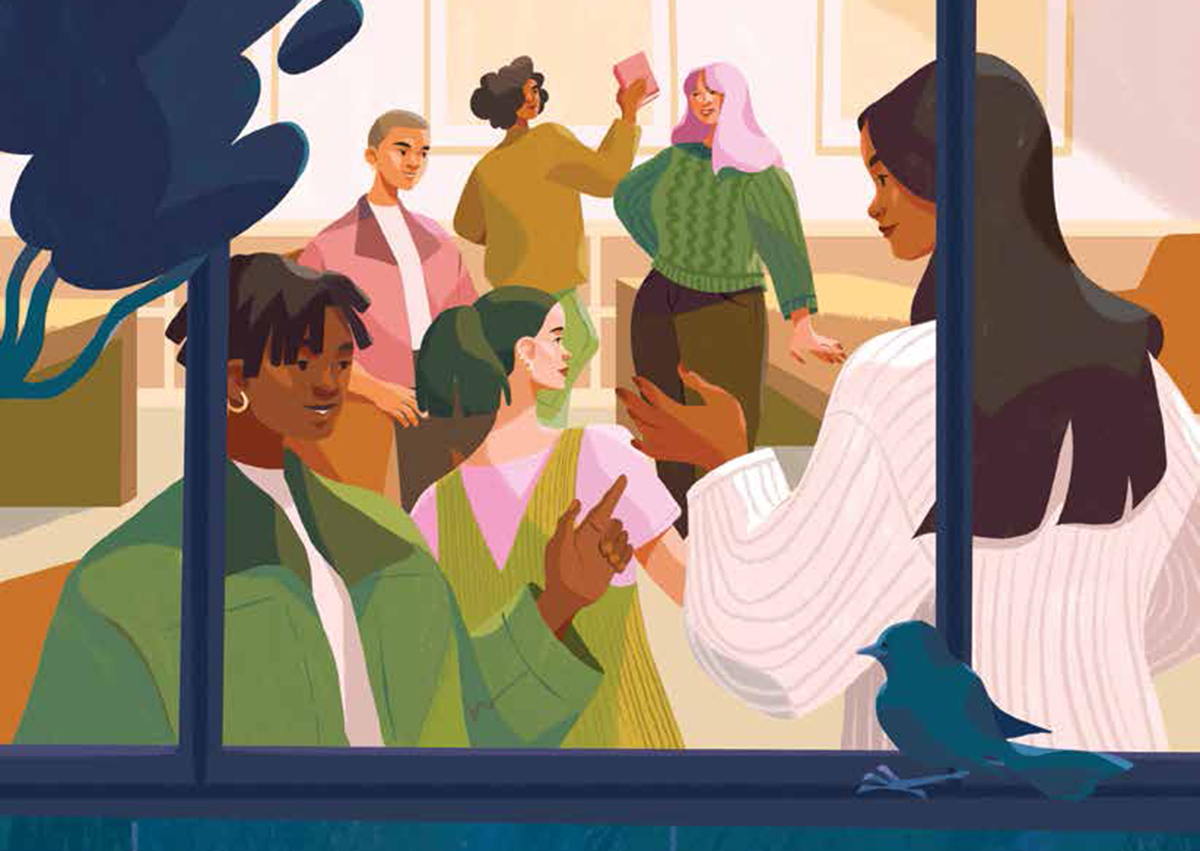During her senior year, she adds, she found support in the classroom as well. Black Experience in White America, a course taught by Russell Weatherspoon ’01, ’03, ’08, ’11 (Hon.); P’92, P’95, P’97, P’01, she says, provided an additional safe space to explore the intersection of class and race with her peers.
Now as an elected General Alumni Association (GAA) director and chair of the GAA Alumni Affinity Engagement Committee, Tamakloe is leading efforts to curate identity and affinity spaces like ALES for Exeter alumni. Her focus is on intersectionality.
“I am working to create sustainable, accessible pathways for Exonians to connect with each other and continue to reimagine how we can work together to leave this world a little better than we found it, which is at the heart of the school’s non sibi philosophy,” she says.
On-campus affinity spaces
In educational settings, affinity spaces are meant to create a sense of belonging so students feel affirmed and encouraged and, most important, they can exist freely without the oppressive gaze that regards them as “others.”
In predominantly white and heteronormative environments, people who are differently abled, LGBTQ+ and from various racial and ethnic backgrounds can often feel invisible and stressed, even if the behavior toward them is unintentional.
“Affinity spaces provide opportunities for people to find cultural reflections and affirmation,” says Stephanie Bramlett, the Academy’s director of Equity and Inclusion. “They are a well-documented key ingredient in how we foster connection and belonging for all at Exeter.”
Bramlett says the Office of Multicultural Affairs currently sponsors two types of identity-based groups: cultural groups and affinity groups. Since these groups are student-driven efforts, numbers fluctuate from year to year. Of this year’s 30 groups, 10 are affinity groups.
Bramlett says that cultural group members come together to learn about and celebrate a particular social or cultural group. They are open to anyone who wants to be in community with others discussing a topic around a particular culture. Examples include ALES, the Exeter Feminist Union and the Gender and Sexuality Alliance.
By comparison, Bramlett says, affinity group members come together because they have a shared social identity and can speak to the unique experience of being a member of the group. “You know you are in the right affinity group,” she explains, if you can “speak to that group’s collective cultural identity and experience from the ‘I’ and ‘we’ perspective.” Examples include La Alianza Latina, Exonians With Disabilities and Different Abilities, and the Association of Low-Income Exonians.
“At the Academy, affinity groups play an integral part in the student experience,” says Associate Dean of Multicultural Affairs Hadley Camilus. “Being in a familiar space with other students who share a particular salient identity is paramount, for some, to being able to thrive here. We don’t prescribe that. The students get a sense of when they need to be around those who feel familiar. It’s important for students to know that others are having similar experiences here, and to learn how to be authentic in a community that doesn’t always allow for that, from their more seasoned peers.”

 swallowed what happened,” she said.
swallowed what happened,” she said. and solicit feedback, to improve communication with young alumni and to create affinity groups. It became very clear, she says, that they needed to respond with some level of programming and safe space creation for alumni to engage with one another. The Alumni Affinity Engagement Committee was formed and focused first on bringing affinity groups together during the 2021 virtual reunion program, a practice that had begun with reunion classes prior to the pandemic.
and solicit feedback, to improve communication with young alumni and to create affinity groups. It became very clear, she says, that they needed to respond with some level of programming and safe space creation for alumni to engage with one another. The Alumni Affinity Engagement Committee was formed and focused first on bringing affinity groups together during the 2021 virtual reunion program, a practice that had begun with reunion classes prior to the pandemic.